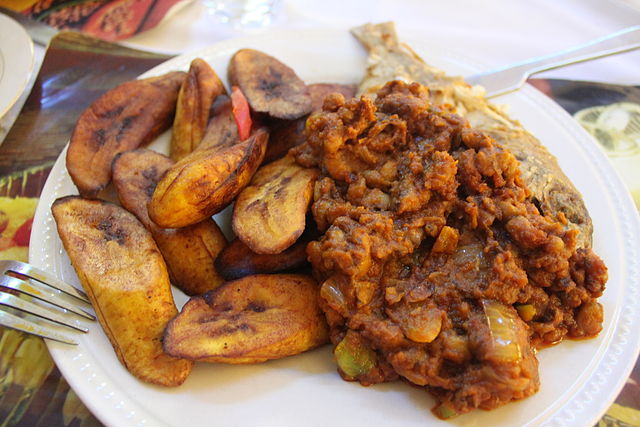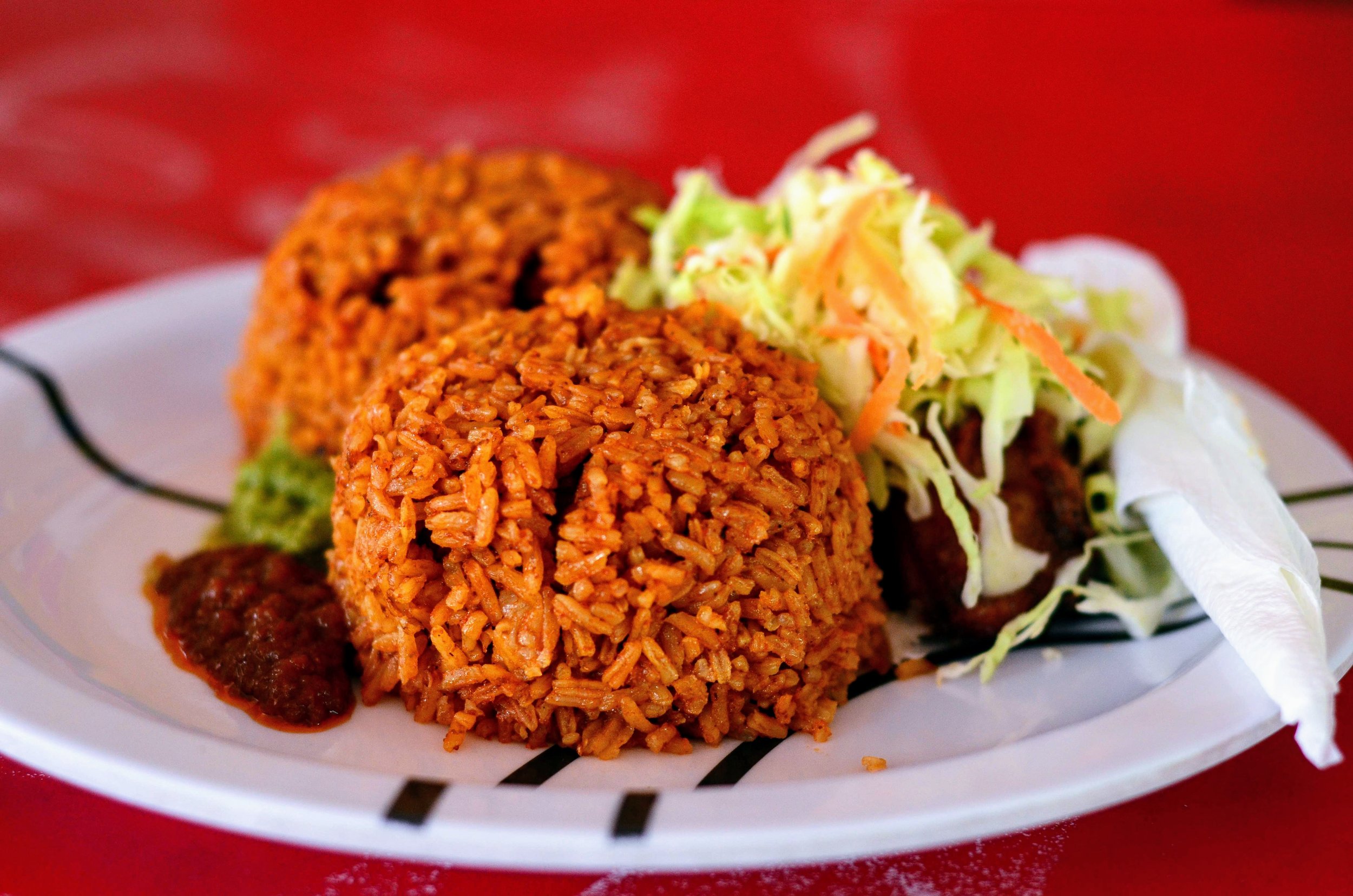By:Kenneth Appiah Bani.
When visiting Ghana, one of the most memorable experiences is tasting its rich and diverse cuisine, which reflects a blend of indigenous ingredients and cooking techniques passed down through generations. Whether dining in local restaurants or enjoying street food, the flavors of Ghana are sure to impress.
Here are some must-try Ghanaian dishes for visitors:
- Jollof Rice: A staple across West Africa, this one-pot rice dish is cooked with tomatoes, onions, and spices, giving it a rich flavor and vibrant color. Often served with fried chicken, fish, or beef, it is a highlight at parties and street vendors. The debate over which country makes the best jollof continues, but Ghanaian jollof is particularly cherished.
- Fufu with Soup: A beloved dish in Ghana, fufu is made by pounding boiled cassava, yam, or plantain into a smooth, dough-like consistency, typically served with various soups like light soup, groundnut soup, or palm nut soup. Eating fufu is a cultural experience, often done by hand.
- Waakye: This comforting dish combines rice and beans, often cooked with dried millet leaves for a reddish-brown color. Waakye is versatile, served with accompaniments like fried plantains, spaghetti, boiled eggs, and the famous Ghanaian shito (black pepper sauce). It is commonly enjoyed in the mornings.
- Kelewele: A popular snack, kelewele consists of spicy fried plantains seasoned with ginger, garlic, and pepper. Found at street food stalls, it is often served with roasted peanuts, offering a delightful contrast of sweet and spicy flavors.
- Banku and Tilapia: In coastal areas, this dish features banku, a fermented dough made from maize and cassava, paired with grilled tilapia, known for its tangy flavor and smooth texture.
- Kenkey, “Komi” and Fish: Traditional and Filling
Kenkey, firmer than banku, is wrapped in maize husks and steamed, giving it a slightly sour taste. It is traditionally served with fried or grilled fish, pepper sauce, and shito, making it a popular street food in coastal cities like Accra and Tema, known for being a filling meal. - Red Red: The Vegan Delight
Red red, or Gob3, is a comforting dish made from black-eyed peas cooked in palm oil, giving it a red hue, and is typically served with fried plantains. This dish is popular among vegetarians and vegans but can also include meat or gari (cassava flakes), offering a hearty and delicious combination. - Tuo Zaafi (TZ): A Northern Delicacy
Tuo zaafi, or TZ, is a thick porridge from northern Ghana made from maize or millet flour. It is traditionally served with soups like ayoyo or groundnut soup and is enjoyed nationwide for its smooth texture and flavorful accompaniments. - Braised Rice “Angwamo”
Angwamo, or braised rice, is a beloved Ghanaian dish made by sautéing rice with onions, tomatoes, and spices before cooking it in broth or water. This method infuses rich flavors, resulting in a fragrant meal often served with meats, vegetables, or stews, making it versatile for various occasions. - Kokonte: ‘Face the Wall’
Kokonte, known as ‘face the wall’ or Abeti3, is made from dried cassava flour. Despite its simple preparation, it is a favorite among Ghanaians, especially when paired with flavorful soups like groundnut or light soup. Typically eaten with hands, its earthy taste complements rich, spicy soups well. - Akple with Aborbi Tadi or Okro Soup: A Volta Region Specialty
Akple, a greyish starchy dish made from maize flour, originates from Ghana’s Volta Region. It is traditionally served with aborbi tadi, a mix of ground pepper, tomatoes, sliced onions, and roasted anchovies, or with okro soup that includes various fish. The rich and spicy soup complements the smooth texture of akple, showcasing the culinary heritage of the Volta Region. - Ampesi
Ampesi is a traditional Ghanaian dish made from boiled starchy vegetables like plantain, yam, or cassava, typically served with richly spiced stews such as kontomire (cocoyam leaf) stew or palava sauce, enhancing its flavors. This hearty meal is popular across Ghana, known for its nutritious and filling qualities. Ampesi reflects the region’s agricultural lifestyle, using local ingredients to create comforting dishes enjoyed at any meal.
The Essence of Ghanaian Cuisine
Ghanaian cuisine is rich and diverse, with each dish telling a story of its people, history, and culture. Whether enjoying jollof rice at a gathering or the spicy kelewele from a street vendor, every bite offers a glimpse into Ghana’s vibrant food culture. Visitors to Ghana should explore the local cuisine, which not only delights the palate but also connects them to the country’s traditions and way of life.







